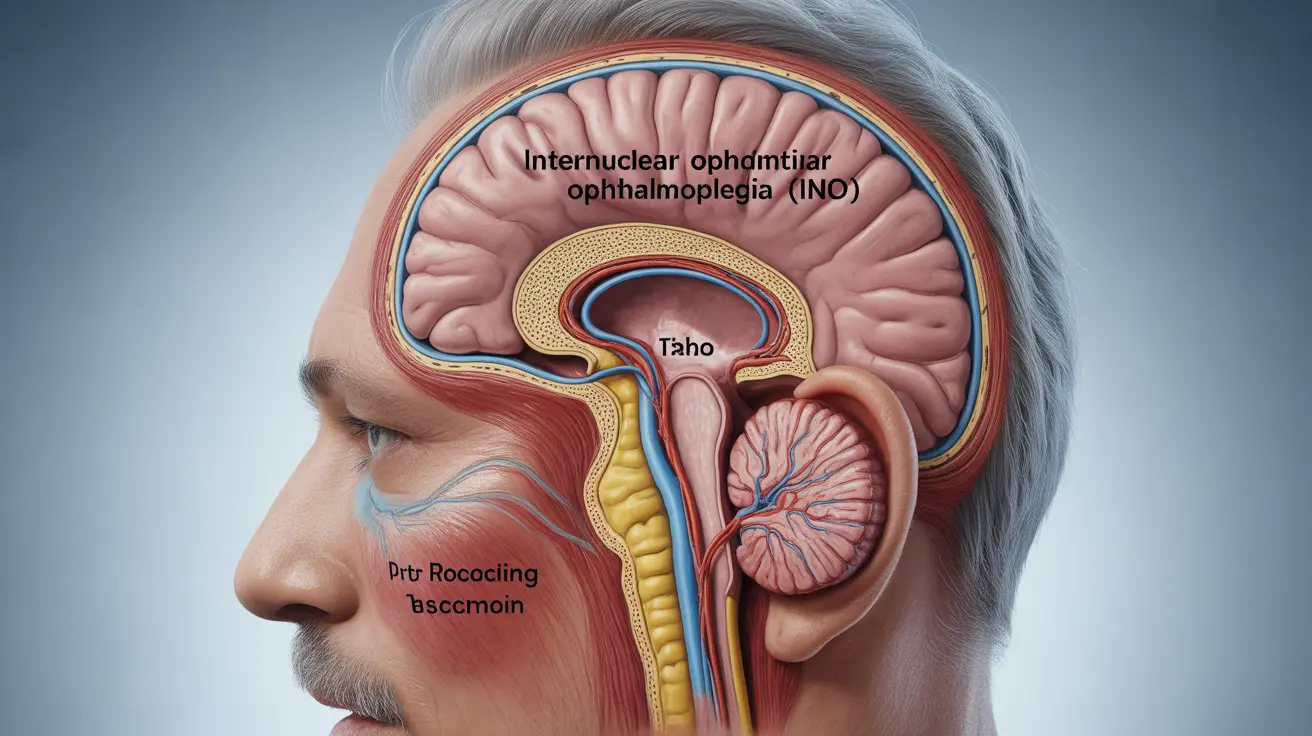Internuclear ophthalmoplegia (INO) is a complex eye movement disorder that occurs when specific neural pathways in the brain become damaged. This condition affects the coordination between both eyes, particularly when trying to look side to side, leading to various vision problems that can significantly impact daily life.
Understanding INO is crucial for both healthcare providers and patients, as it often serves as an important diagnostic indicator for underlying neurological conditions. Early recognition and proper management can make a substantial difference in patient outcomes.
Understanding the Mechanism of INO
INO occurs when there's damage to the medial longitudinal fasciculus (MLF), a neural pathway in the brainstem that coordinates eye movements. This pathway ensures both eyes work together smoothly when looking in different directions. When damaged, it disrupts the synchronized movement of the eyes, leading to characteristic symptoms.
Common Causes and Risk Factors
Several conditions can lead to the development of INO:
- Multiple sclerosis (MS) - the most common cause in young adults
- Stroke - particularly common in older adults
- Brain trauma
- Infections affecting the brain
- Tumors in the brainstem region
- Certain medications or toxic substances
Recognizing INO Symptoms
The primary symptoms of INO include:
- Double vision (diplopia), especially when looking side to side
- Difficulty tracking moving objects
- Problems with depth perception
- Nystagmus (involuntary eye movements)
- Impaired reading ability
- Dizziness or vertigo
Diagnostic Process
Diagnosing INO typically involves:
- Detailed neurological examination
- Eye movement tests
- MRI scanning of the brain
- Additional testing for underlying conditions like MS
- Visual acuity assessments
Treatment Approaches
Treatment for INO focuses on addressing both the underlying cause and managing symptoms:
Managing Underlying Conditions
The primary treatment approach varies depending on the root cause:
- MS treatment with disease-modifying drugs
- Stroke management and prevention
- Treatment of infections if present
- Surgical intervention for tumors when necessary
Symptom Management
Several options are available for managing INO symptoms:
- Prism glasses for double vision
- Vision therapy exercises
- Adaptive devices for reading and daily activities
- Medications to control nystagmus when present
Recovery and Prognosis
The outlook for INO varies significantly depending on the underlying cause. Some patients may experience complete recovery, while others may have persistent symptoms requiring ongoing management. Early intervention and appropriate treatment of the underlying condition often lead to better outcomes.
Frequently Asked Questions
What are the common causes and risk factors of internuclear ophthalmoplegia (INO)? Multiple sclerosis is the most common cause in younger patients, while stroke is more common in older adults. Other risk factors include brain trauma, infections, tumors, and certain medications.
What symptoms should make me suspect I have INO and how is it diagnosed? Key symptoms include double vision, difficulty with side-to-side eye movements, and problems tracking moving objects. Diagnosis involves neurological examination, eye movement tests, and brain MRI scans.
How is INO treated, especially when caused by multiple sclerosis or stroke? Treatment focuses on addressing the underlying condition through appropriate medical interventions, such as MS medications or stroke management. Symptomatic treatment may include vision therapy and adaptive devices.
Can double vision caused by INO be managed or corrected, and what options are available? Yes, double vision can often be managed using prism glasses, vision therapy exercises, and adaptive devices. The effectiveness varies depending on the underlying cause and severity.
What is the typical prognosis for INO and can patients fully recover from it? The prognosis varies based on the underlying cause. Some patients may achieve full recovery, particularly if the cause is treatable. Others may require ongoing management, but many can achieve significant improvement with appropriate treatment.




